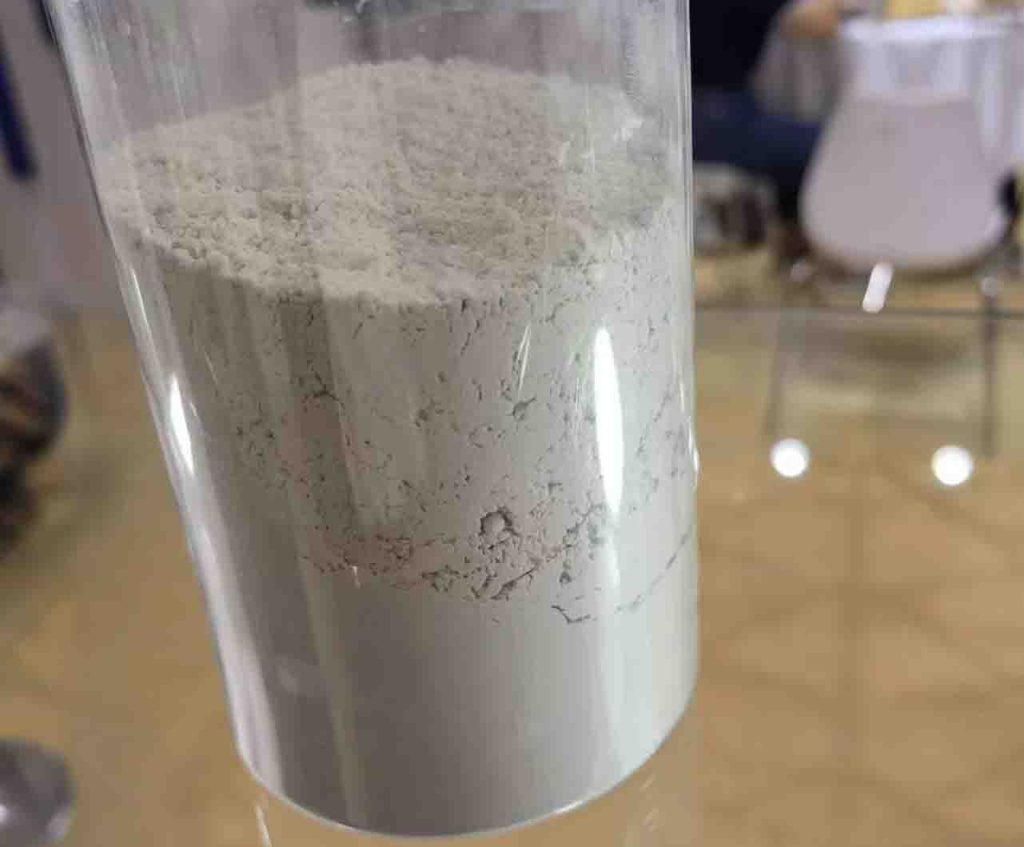Organic Clay
What is Organic Clay?
One of the characteristics that sets organic materials apart from inorganic ones is the presence of molecules that are based on carbon, such as those that may be discovered in clay minerals. These minerals are mostly made up of alumina, silica, and water, and they are produced when rocks undergo the processes of weathering and erosion.
Clay is composed of minerals; nevertheless, the inclusion of organic matter has the potential to alter both its composition and the capabilities it has. Clay is often thought of as an organic substance, despite the fact that its constituent minerals make up the majority of its make-up..
How is Clay Formed?
Clay is a naturally occurring material that is formed as a result of the weathering and erosion of rocks. One common mineral group that creates clay is smectite. Bentonite and montmorillonite clays are the most common clays under the smectite group.
Clay minerals are made up of sheets of silicon and oxygen atoms, which are then punctuated by either aluminum or magnesium atoms at regular intervals. Clay acquires its unique characteristics through the layering and organization of these sheets, which may take place in a variety of different ways. Clay is a fantastic absorbent that has the ability to hold water as well as other fluids..
When bentonite and montmorillonite go through organophilic process, this process or treatment creates the organoclays. This treatment increased water repellency, improved strength, and the ability to remove pollutants from water and soil.
Hydrophobic Bonding on Clay–Organic Complexes
The process of making the surfaces of clay minerals hydrophobic, or water-repellent. It changes by attaching organic molecules having hydrophobic properties. This is referred to as hydrophobic bonding on clay-organic complexes. This process modifies the surfaces of clay minerals so that they are water-repellent.
minerals are naturally occurring layered silicates that carry a net negative charge on the surfaces of their layered structures. These surfaces are hydrophilic. This means they have a strong attraction for water. As a result, they draw in and hold onto water molecules.
By treating clay minerals with certain organic molecules, one is able to alter the surface features of the clay minerals. Organic molecules that include hydrophobic functional groups, like extended hydrocarbon chains. These are unable to interact well with water and instead prefer to do so with non-polar substances. Clay minerals and organic molecules have the potential to react in a number of different ways, including adsorption and the formation of covalent bonds. Organic clay complexes are what are produced as a byproduct of this process. These complexes consist of organic molecules that have been attached to the surface of the clay mineral.
As a direct result of this transformation, the surfaces of organic clay complexes become hydrophobic. To put it another way, they avoid water and have a weak attachment to it. Clay minerals may have their surface chemistry altered by the attachment of hydrophobic organic molecules, which leads to the creation of a hydrophobic coating that prevents the underlying clay surface from coming into direct contact with water.
Organic Clay Varieties
Each type of organic clay mineral has distinct characteristics, which make them suitable for specific applications based on their cation exchange capacity, swelling behavior, particle size, and other factors.
Kaolinite
It is mainly created through the weathering of aluminum-rich silicate minerals like feldspar. Kaolinite is distinguished by its plate-like structure and poor cation exchange capacity. It has tiny particle size and is often white or pale in color.
Montmorillonite
A form of clay mineral that belongs to the smectite mineral group. It got its name from the French town where it was found. Montmorillonite is made up of stacked layers of alumina and silica sheets with water molecules and exchangeable cations in between. This clay mineral has a high cation exchange capacity, which allows it to easily absorb and exchange ions. Montmorillonite is widely used in drilling muds, organic clay paint, and coatings.
Smectite
The most common and well-known smectite clay are montmorillonite and bentonite. Smectite minerals, like montmorillonite, have a layered structure composed of alumina and silica sheets with interlayer gaps holding water and exchangeable cations. When exposed to water, smectite minerals display significant swelling due to the expansion of the interlayer gaps.
Illite
A clay mineral that belongs to the group of mica minerals. It is composed of layered alumina and silica sheets, similar to other clay minerals, but with a higher proportion of potassium in its crystal structure. Illite is typically light-colored and exhibits a platy or flaky morphology. It has a moderate cation exchange capacity and is often found in sedimentary rocks and soils.
Bentonite Clay History, Benefits & Uses
Physical Properties
Organic Clay is commonly found in shades of light gray or beige. It can also occur in other colors. It has a soft and fine texture, making it easily crumbled or pulverized. This attribute contributes to its malleability and workability. The density of bentonite can vary but it falls within the range of 2.0 to 2.7 grams per cubic centimeter.
It has the ability to absorb water. Bentonite undergoes swelling, increasing in volume and forming a gel-like substance when mixed with water. The primary mineral found in bentonite is montmorillonite. Alongside montmorillonite, other minerals like feldspar, calcite, and quartz may also be present, albeit in smaller quantities.
It exhibits a high cation exchange capacity. This means it can attract and exchange cations, such as calcium, magnesium, and potassium, with its surroundings. It has an alkaline pH ranging between 8 and 10 that it tends to be basic rather than acidic.
Size and Shape
The mean particle size of bentonite organic clay is 36 μm. And this measurement indicates the average diameter of the particles comprising the clay material. Bentonite falls within the range of fine particles. A finer particle size provides increased surface area, which can enhance the reactivity and adsorption capabilities of the clay. The smaller particles allow for more intimate contact and interaction with other substances in applications such as adsorption of pollutants, soil amendments, or in the formulation of composite materials.
The particle size of bentonite can impact the rheological properties of suspensions or solutions containing the clay. Finer particles tend to have a greater tendency to form stable colloidal suspensions due to increased surface charge and decreased settling velocity.
Formation
The formation of bentonite is a process that involves the transformation of volcanic glass into clay minerals. This transformation occurs through a series of geological processes that include hydration and the removal of alkalies, bases, and possibly silica, while preserving the textures of the original volcanic glass.
Volcanic glass initially deposited as a result of volcanic activity. Over time, through interactions with water and other geological factors, the volcanic glass undergoes alteration. The first step in the formation of bentonite is hydration, where the volcanic glass absorbs or combines with water molecules. This hydration process leads to the breakdown of the amorphous structure of the glass and the initiation of clay mineral formation.
During this transformation, alkalies such as sodium and potassium and bases may be leached out or removed from the volcanic glass. Some silicas may also be lost. These alterations in the chemical composition are part of the maturation process from volcanic glass to organic clay minerals.
Solubility
Organic Clay does not dissolve in water, instead it forms a colloidal solution when mixed with water. A colloidal solution consists of solid particles dispersed throughout a liquid medium, in this case, water. The bentonite particles remain suspended in the water, creating a stable colloidal system.
The malleable mass formed by bentonite organic clay when it swells with water is commonly referred to as bentonite organic clay slurry. This slurry has a soft and pliable consistency, making it suitable for molding or shaping purposes. The malleability of the bentonite slurry allows it to be easily formed into desired shapes or used as a barrier material in applications such as drilling, construction, and environmental remediation.
Uses
Organic bentonite clay is used as a key component in drilling fluids to lubricate and cool the drill bit, suspend cuttings, and provide pressure control during drilling operations. The swelling and colloidal properties of bentonite make it effective in creating a stable suspension that helps transport cuttings to the surface, preventing well collapse, and ensuring efficient drilling.
It also has excellent absorbent properties make it useful in various applications. It can absorb large amounts of water and other liquids, making it effective in products such as cat litter, where it absorbs and neutralizes odors. Bentonite is also employed as an absorbent in spill cleanup and many more.
Organophilic Clay and Organic Clay
Organophilic refers to a material or substance that has an affinity for organic and oily surfaces and liquids. It also has a characteristic of repelling or rejecting water-based systems. Organophilic substances are designed or modified to interact preferentially with organic compounds, such as hydrocarbons, rather than with water.
Organic clay refers to a type of clay material. This is capable of removing insoluble free hydrocarbons. Bentonite or montmorillonite, possess properties that make them effective in adsorbing or absorbing hydrocarbons. These clays have a high surface area and cation exchange capacity, allowing them to attract and retain hydrocarbons, such as oil or grease, on their surfaces.Organic Clay,organoclay ,we wait your inqury.


